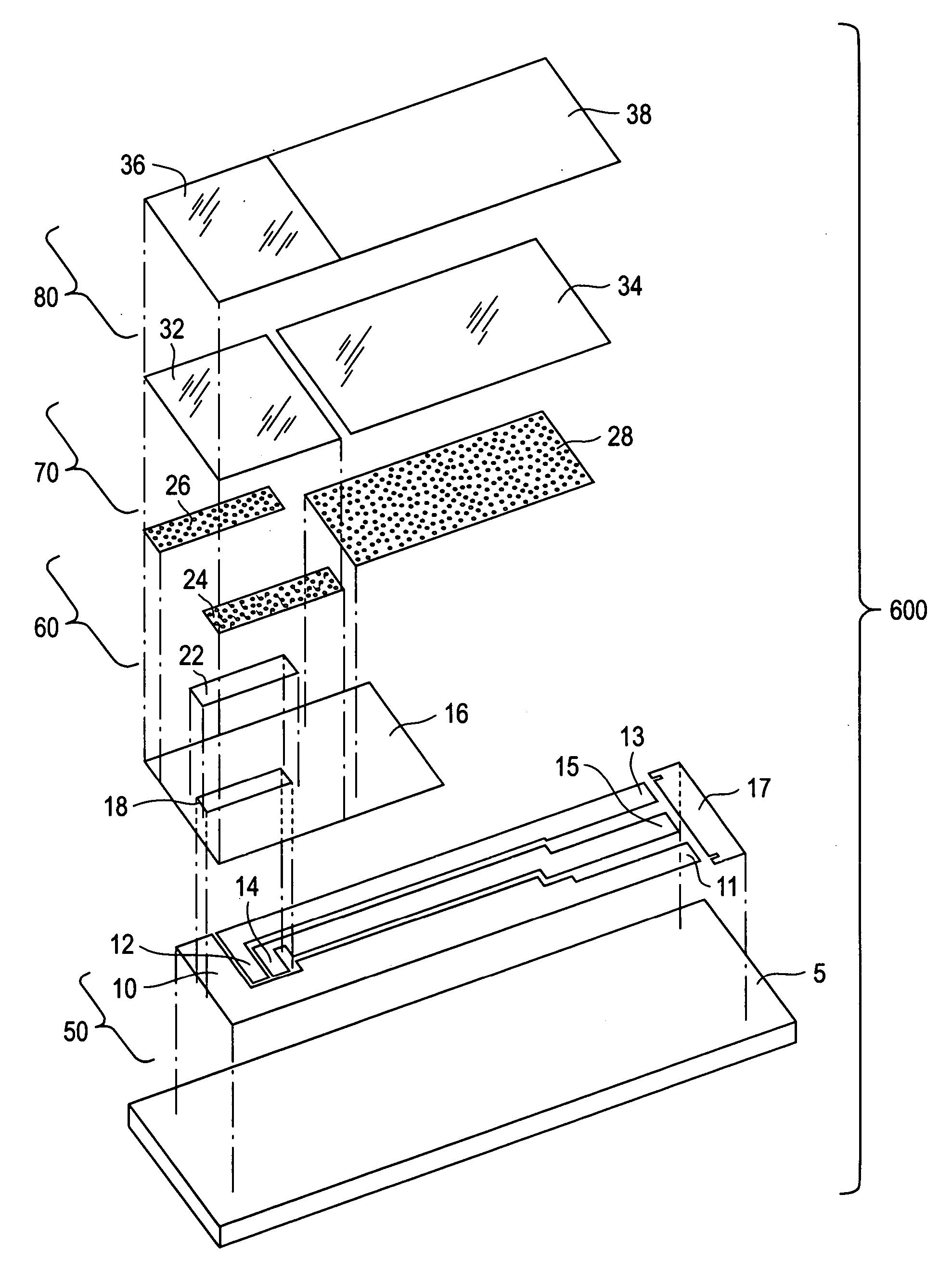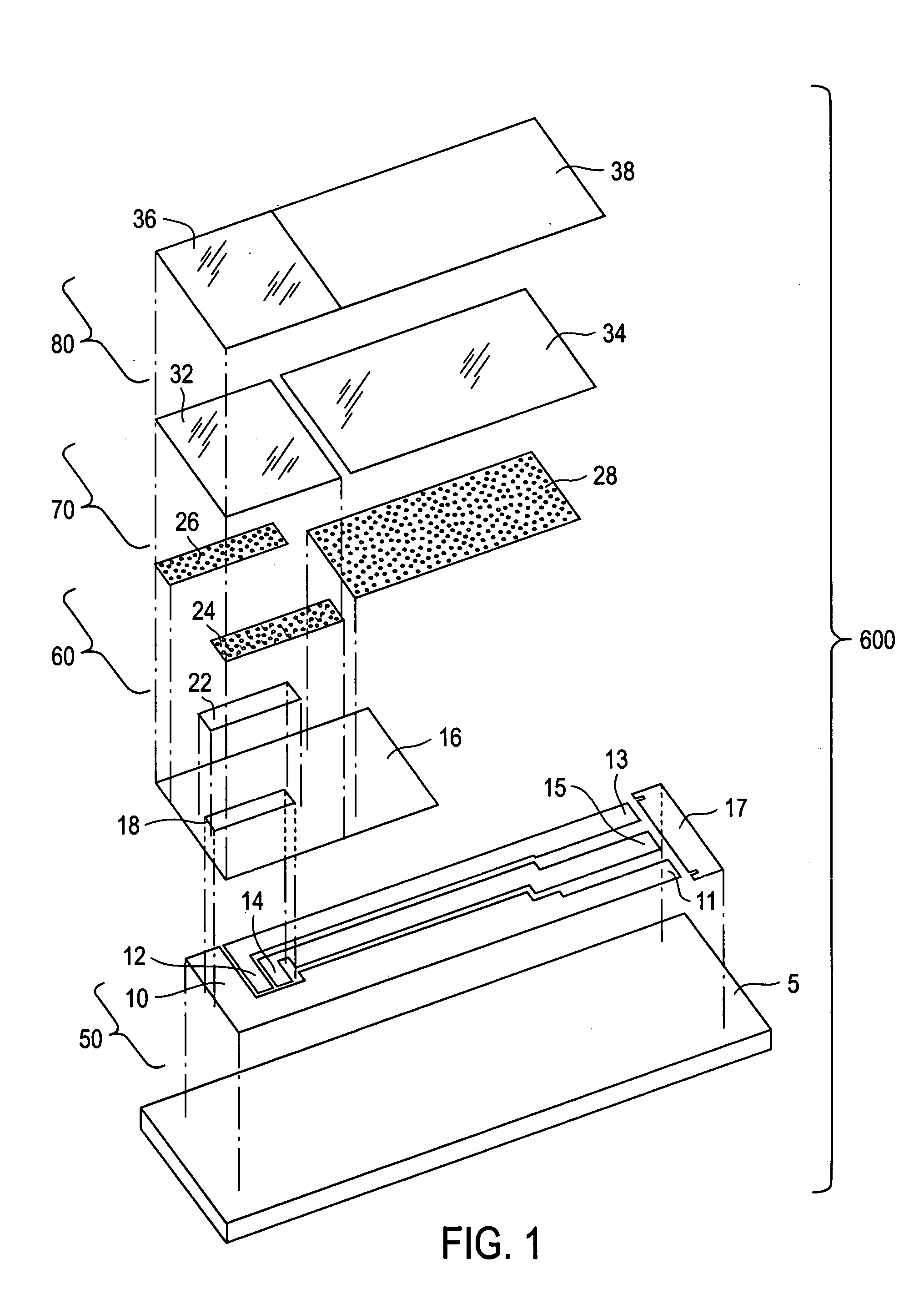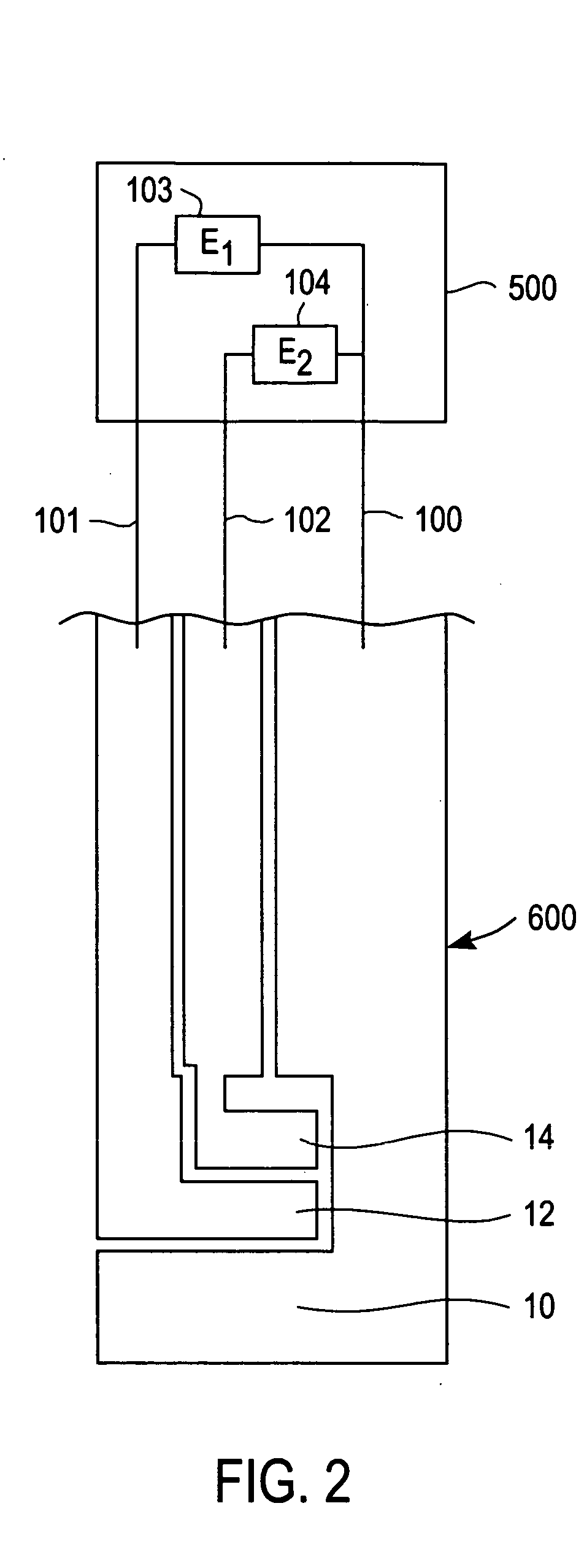Meter for use in an improved method of reducing interferences in an electrochemical sensor using two different applied potentials
a technology of electrochemical sensor and applied potential, which is applied in the field of electrochemical glucose test strips, can solve the problems of affecting the measured glucose concentration, generating a significant portion of interference current, and eliminating direct interference current, so as to reduce the effect of oxidation current, facilitate the oxidation of glucose, and increase the oxidation of interfering compounds
- Summary
- Abstract
- Description
- Claims
- Application Information
AI Technical Summary
Benefits of technology
Problems solved by technology
Method used
Image
Examples
Embodiment Construction
[0023] The present invention is directed to a meter for use with a test strip which utilize the method described herein to measure analyte and, more particularly, to a meter as illustrated in FIG. 2 which is programmed in accordance with the method described herein.
[0024] While the present invention is particularly adapted to the measurement of glucose concentration in blood, it will be apparent to those of skill in the art that the method described herein may be adapted to improve the selectivity of other systems used for the electrochemical measurement of analytes in physiological fluids. Examples of systems that may be adapted to improve selectivity using the method according to the present invention include electrochemical sensors used to measure the concentration of lactate, lactate, alcohol, cholesterol, amino acids, choline, and fructosamine in physiological fluids. Examples of physiological fluids that may contain such analytes include blood, plasma, serum, urine, and inter...
PUM
| Property | Measurement | Unit |
|---|---|---|
| Polarity | aaaaa | aaaaa |
| Current | aaaaa | aaaaa |
| Electric potential / voltage | aaaaa | aaaaa |
Abstract
Description
Claims
Application Information
 Login to View More
Login to View More - R&D
- Intellectual Property
- Life Sciences
- Materials
- Tech Scout
- Unparalleled Data Quality
- Higher Quality Content
- 60% Fewer Hallucinations
Browse by: Latest US Patents, China's latest patents, Technical Efficacy Thesaurus, Application Domain, Technology Topic, Popular Technical Reports.
© 2025 PatSnap. All rights reserved.Legal|Privacy policy|Modern Slavery Act Transparency Statement|Sitemap|About US| Contact US: help@patsnap.com



